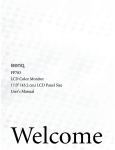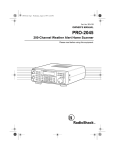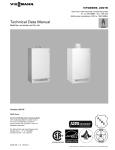Download BenQ FP781 17 in. Flat Panel LCD Monitor
Transcript
BenQ FP781s LCD Color Monitor 17.0" (43.18 cm) LCD Panel Size User's Manual BenQ LCD Color Monitor User's Guide Copyright Disclaimer Safety Instructions 2002. BENQ Corporation. All rights reserved. No part of this publication may be reproduced, transmitted, transcribed, stored in a retrieval system or translated into any language or computer language, in any form or by any means, electronic, mechanical, magnetic, optical, chemical, manual or otherwise, without the prior written permission of BENQ Corporation. BENQ Corporation makes no representations or warranties, either expressed or implied, with respect to the contents hereof and specifically disclaims any warranties, merchantability or fitness for any particular purpose. Further, BENQ Corporation reserves the right to revise this publication and to make changes from time to time in the contents hereof without obligation of BENQ Corporation to notify any person of such revision or changes. 1. 2. 3. 4. 5. 6. 7. The AC adapter isolates this equipment from the AC supply. Unplug this product from the wall outlet before cleaning. Clean the LCD monitor surface with a lint-free, non-abrasive cloth. Avoid using any cleaning solution or glass cleaner. Slots and openings on the back or top of the cabinet are provided for ventilation. They must not be blocked or covered. This product should never be placed near or over a radiator or heat register, or in a built-in installation unless proper ventilation is provided. This product should be operated from the type of power indicated on the marking label. If you are not sure of the type of power available, consult your dealer or local power company. Never push objects of any kind, or spill liquid of any kind into this product. Do not attempt to service this product yourself, as opening or removing covers may expose you to dangerous voltages or other risks. If any above mentioned misuse or other accident (dropping, mis-operations) occurs, contact qualified service personnel for servicing. The power supply cord serves as a power disconnect device for pluggable equipment. The socket outlet shall be installed near the equipment and shall be easily accessible. English 1 BenQ LCD Color Monitor User's Guide = Table == of Contents Unpacking .......................................................................................................................................... 3 Views of the Monitor ..................................................................................................................... 4 Front View (1) .................................................................................................................................. 4 Front View (2): Control panel ...................................................................................................... 4 Back View (1) ................................................................................................................................... 5 Back View (2): Locations of plugs & sockets ............................................................................ 5 Installation ......................................................................................................................................... 6 Hardware Installation ..................................................................................................................... 6 Software Installation ....................................................................................................................... 7 Adjusting the Monitor .................................................................................................................. 37 Hot Key Mode ............................................................................................................................... 37 Main Menu Mode ........................................................................................................................... 38 Troubleshooting ............................................................................................................................ 45 Frequently Asked Questions (FAQ) ......................................................................................... 45 Need More Help? .......................................................................................................................... 46 Supported operating modes ....................................................................................................... 47 Specifications .................................................................................................................................. 48 Appendix: An Introduction to LCD Technology ................................................................... 49 Principles of LCD Technology .................................................................................................... 49 The TFT panel ................................................................................................................................ 49 Important LCD parameters ........................................................................................................ 50 Display errors ................................................................................................................................ 51 Comparison of CRT & LCD monitors ..................................................................................... 52 Summary .......................................................................................................................................... 52 English 2 BenQ LCD Color Monitor User's Guide Unpacking Please check you have the following items. If they are missing or are damaged, please contact the dealer immediately at which you purchased the good. LCD monitor with signal cable FP 781s ikey Input Exit < > Enter Quick Start Guide CD-ROM Power Cord Power Adaptor Signal Cable Audio Cable English 3 BenQ LCD Color Monitor User's Guide Views of the Monitor Front View (1) FP 781s ikey Input Exit < > Enter Front View (2): Control panel 1 2 FP 781s ikey Input Exit < > Enter 3 4 1. Control key 2. Earphone jack 3. Speaker 4. Microphone English 4 BenQ LCD Color Monitor User's Guide Back View (1) Back View (2): Locations of plugs & sockets 1. D-sub connector 2. DVI connector 3. Microphone input socket (MIC) 4. Audio in socket (LINE IN) 5. DC 5V output socket (DC5V) 6. DC 12V input socket (DC12V) 7. Earphone jack English 5 BenQ LCD Color Monitor User's Guide Installation Hardware Installation A. Make sure that the computer and monitor’s power are both turned off. Please follow the steps to install your LCD monitor. 1 . Connect the signal cable and power adaptor to BenQ LCD monitor. 2 . Connect the audio cable to the Audio Input of BenQ LCD monitor. 3 . Connect power cord to power adaptor first and then connect the power adaptor to LCD monitor. B. Connect the signal cable to the VGA output of the graphics card on the computer. C. Connect the audio cable to your computer. D. Connect the power cord at the back of the monitor to an AC power socket. Please make sure that the socket is not blocked or covered, so you can disconnect the unit from AC supply if you need to. Your monitor is equipped with an automatic power supply for a voltage range from 100 to 240 Volt at a frequency of 50 to 60 Hz. Be sure that your local power is within the supported range. If you are unsure, ask your electricity supplier. English 6 BenQ LCD Color Monitor User's Guide Software Installation A. Microsoft® Windows® 95 / 98 / 2000 / XP If you are using Windows 95, Windows‚98, Windows 2000 or XP as an operating system, you have to set up the correct monitor driver. Windows 95 The first time you start Windows with a new monitor, the system will detect it and automatically install the driver for plug and play displays. To install the current driver from CD, proceed as follows: 1. 2. Insert “BenQ LCD Monitor” CD-ROM into your CD-ROM Driver. Click “Start” then “Settings”. 3. Double click the “Display” icon in the Control Panel. English 7 BenQ LCD Color Monitor User's Guide 4. From the “Display Properties” window, select the “Settings” tab. Click the “Advanced Properties" button in the bottom right corner. 5. Select the “Monitor” tab. Click the “Change” button in the top right corner. English 8 BenQ LCD Color Monitor User's Guide 6. Now click the “Have Disk” button in the bottom right corner. When the next window appears, select the “Browse” button. 7. 8. Insert the supplied CD into your computer. Select the CD-drive from the drop-down menu. In the field above the drive selection, change to the "Drivers” folder. The current driver files are located there. Press “OK” and the window closes. English 9 BenQ LCD Color Monitor User's Guide 9. By pressing “OK” again in the next window you will be given a list of compatible devices. Select “FP781s” from the list and press “OK” again. 10. You are now back at “Advanced Display Properties.” Close this window by clicking “OK “ and confirm the following messages with “Yes”. Click “OK” and “Yes” again. The installation is now completed. You can close “Display Properties”. English 10 BenQ LCD Color Monitor User's Guide Windows 98 To manually install or update the driver, perform the following steps: 1. Open the Control Panel and double-click "Display" icon. 2. From the "Display Properties" window, select the "Settings" tab. Click the "Advanced..." button in the bottom right corner. English 11 BenQ LCD Color Monitor User's Guide 3. Select the "Monitor" tab. Click the "Change" button in the top right corner. 4. The "Update Device Driver Wizard" opens. Confirm by clicking "Next". English 12 BenQ LCD Color Monitor User's Guide 5. Select "Display a list of all drivers in a specific location, so you can select the driver you want." and press "Next". 6. Now click the “Have Disk” button in the bottom right corner. Another window appears, select the “Browse” button. English 13 BenQ LCD Color Monitor User's Guide 7. Insert the supplied CD into your computer. Select the CD-drive from the drop-down menu. 8. By pressing “OK” again in the next window you will be given a list of compatible devices. Select “FP781s” from the list and press “Next” again. 9. An “Insert Disk” dialogue box appears. Click “OK”, and then click “Skip File.” English 14 BenQ LCD Color Monitor User's Guide 10. Close “Update Device Driver Wizard” by clicking “Finish” to complete the installation. . English 15 BenQ LCD Color Monitor User's Guide Windows 2000 The first time you start Windows with a new monitor, the system will detect it and automatically start the “Add New Hardware Wizard”. Carry out the instructions beginning at step 4. 1. 2. Insert “BenQ LCD Monitor” CD-ROM into your CD-ROM Driver. Click “Start” then “Settings”. 3. Open the Control Panel and double click on the “Display” icon. English 16 BenQ LCD Color Monitor User's Guide 4. From the “Display Properties” window, select the “Settings” tab. Click the “Advanced...” button in the bottom right corner. 5. Select the “Monitor” tab, then click “Properties”. . English 17 BenQ LCD Color Monitor User's Guide 6. Select the “Driver” tab, then click “Update Driver”. 7. The “Upgrade Device Driver Wizard” will pop up. Then Click “Next”. English 18 BenQ LCD Color Monitor User's Guide 8. Select “Display a list of the known drivers for this device so that I can choose a specific driver” then click “Next”. 9. In the next window, click “Have Disk”, then “Install From Disk” window will pop up, click “Browse", the “Located File” will pop up. English 19 BenQ LCD Color Monitor User's Guide 10. Scroll down and select your CD ROM Driver, then click “Next.” English 20 BenQ LCD Color Monitor User's Guide 11. In the list of CD-ROM, select “Drivers” folder then click “Open” twice, then click “OK”, Select the your LCD Mode (FP781s) from the list in the next window then click “Next” twice. 12. The “Digital Signature Not Found” window will appear, click “Yes”, then click “Finish”. English 21 BenQ LCD Color Monitor User's Guide 13. The new drivers are now installed to your computer. English 22 BenQ LCD Color Monitor User's Guide Windows ME To manually install or update the driver, perform the following steps: 1. 2. 3. Click “Start”, “Settings”, “Control Panel” and then double-click “Display”. In the Display Properties window, click the “Settings” tab and click “Advanced...”. Click the “Monitor” tab and then click “Change”. 4. “Update Device Driver Wizard” dialogue box appears. Choose “Specify the location of the driver (Advanced)” and then click “Next”. English 23 BenQ LCD Color Monitor User's Guide 5. Choose “Display a list of all the drivers in a specific location, so you can select the driver you want” then click “Next”. 6. Choose “Monitors” from the list, then click “Next”. English 24 BenQ LCD Color Monitor User's Guide 7. Choose “Display a list of all the drivers in a specific location, so you can select the driver you want.”. 8. Click “Have disk” and then click “Browse...”. 9. Insert “BenQ LCD Monitor’s CD” into your CD-ROM and type d:\ (change the driver letter to match your CD-ROM driver if it is not drive D). Enter “Drivers” folder to select the model from the list left. Click “OK”. English 25 BenQ LCD Color Monitor User's Guide 10. Click “OK” on the “Install From Disk” window. The dialogue box “Update Device Driver Wizard” appears. Choose the model from the list, then click “Next”. English 26 BenQ LCD Color Monitor User's Guide 11. Click “Next”. 12. Click “Finish” to complete the installation. English 27 BenQ LCD Color Monitor User's Guide Windows XP. 1. Right click mouse on the desktop and choose “Properties”. Select “Settings” tab and click the “Advanced” button. A small window will pop up. Select the “Monitor” tab in the new window and then click “Properties”. 2. Select “Driver” tab and then click “Update Driver…” English 28 BenQ LCD Color Monitor User's Guide 3. The “Hardware Update Wizard” will pop up. Then click “Next”. 4. Select “Don’t search. I will choose the driver to install” and then click “Next”. English 29 BenQ LCD Color Monitor User's Guide 5. In the next window, click “Have Disk…”, and then “Install From Disk” window will pop up. Click “Browse”. The “Locate File” window will pop up. English 30 BenQ LCD Color Monitor User's Guide 6. Select your driver and then click “Next”. 7. The new drivers are now installed to your computer. Click “Finish” to exit installation. English 31 BenQ LCD Color Monitor User's Guide B. Choosing the best resolution Due to the technology of an LC display, it always provides a fixed resolution. For the FP781s this is a resolution of 1280x1024. This is called the "Native Resolution", which also represents the maximal resolution. Lower resolutions are displayed on a full screen through an interpolation circuit. Flaws do occur with the interpolated resolution compared to the native resolution. If you want to have all the advantages of LCD technology you must use the native resolution. Using Windows 95/ 98/2000/ XP you can change the resolution as follows: 1. Double-click the "Display" icon in the Control Panel. 2. From the "Display Properties" window, select the "Settings" tab. You can alter the resolution by using the slider on the right-hand side. Select a resolution of 1024x768. Then click "Apply." 3. English 32 BenQ LCD Color Monitor User's Guide 4. In the subsequent windows, press "OK" and "Yes." 5. You can now close "Display Properties." English 33 BenQ LCD Color Monitor User's Guide C. Refresh Rate Selection There is no need to choose the highest possible refresh rate on a LC display. It is not technically possible for an LC display to flicker. Even at a refresh rate of 60 Hz you will get an absolutely flickerfree image. More important is that you make sure that you use one of the factory modes. In contrast to a modern CRT monitor, which is a multiscan monitor, the LC display is a multi-frequency monitor. This means, the best results are only obtained by using the factory modes. You will find a table with the factory modes in this user's guide. For the native resolution of 1280x1024, these, for example, are 60, 70 and 75 Hertz, not 72 Hz; however, in Windows 95/ 98/ 2000/ XP you can change the refresh rate as follows: 1. Double click the "Display" icon in the Control Panel. 2. From the "Display Properties" window, select the "Settings" tab. Click the "Advanced..." button in the bottom right corner. English 34 BenQ LCD Color Monitor User's Guide 3. Select the "Adapter” tab. The refresh rate selection field is located in the center at the bottom of the window. 4. 5. Choose a refresh rate from the table with the factory modes, which can be found in the user’s guide, and select this in the settings field. In the subsequent windows press "Change", "OK" and "Yes". 6. You can now close "Display Properties". English 35 BenQ LCD Color Monitor User's Guide D. Picture Optimization The easiest way to obtain an optimal display is to use the ikey function. Press the “ikey” on the control panel and the monitor will adjust automatically. If you are still not satisfied with the result, you can still adjust the image manually. 1. 2. 3. 4. Run the test program auto.exe from CD-ROM, this is the best way to observe possible changes. You can also use any other image, such as the desktop of your operating system. But we recommend you to use auto.exe. As you run auto.exe, a test pattern emerges. Press “Enter” on control panel to access OSD. If there are vertical noises observed, press “<” or “>” key to select “FINE TUNE” and press “Enter” key. Then press ”<” or “>” key to select “CLOCK” and also press “Enter” key again. Now, press “<” or “>” to adjust the monitor till the noises disappear. If there are horizontal noises observed, press “<” or “>” key to select “FINE TUNE” and press “Enter” key. Then press ”<” or “>” key to select “PHASE” and also press “Enter” key again. Now, press “<” or “>” to adjust the monitor till the noises disappear. To make sure the “iKey” function performs well, you have to use one of the supported modes. If the ikey does not work properly and the “NON PRESET MODE” message is on the OSD, it means you do not use one of the supported modes. Please set your computer to use one of the supported modes. You may find the list of supported modes in this manual. English 36 BenQ LCD Color Monitor User's Guide Adjusting the Monitor A Look at the Control Panel FP 781s ikey Input Exit < > Enter There are 7 keys for user’s control including “iKey”, "Input", “Exit”, “Enter”, “<” and “>” key and a power swith.The following descriptions are the introduction of these keys & switch. 1. 2. 3. 4. 5. 6. 7. “Power”: Turn the power on or off. “iKey” : Adjust vertical position, phase, horizontal position and pixel clock automatically. "Input" key: Select between digital and analog signal sources. “Exit” key: Back to main menus, save menu or exist OSD menu “Enter” key: Enter sub-menus, select items or save items. “<”: For Left adjustment. Left key is the hot key for Contrast adjustment. “>”: For Right adjustment. Right key is the hot key for Brightness adjustment. Hot Key Mode Contrast hot-key 1. Press “<” key to enter the Contrast hot- key mode. 2. Press “<” or “>” key to make adjust ment. The scale can be adjusted from maximum (100) to minimum (0). 3. Press the “Exit” to leave OSD operation. The adjustment can be autosaved. Brightness hot-key 1. Press “>” key to enter the Brightness hot-key mode. 2. Press “<” or “>” key to make adjustment. The scale can be adjusted from maximum (100) to minimum (0). 3. Press the “Exit” to leave OSD operation. The adjustment can be autosaved. English 37 BenQ LCD Color Monitor User's Guide Volume hot-key 1. Press “Exit” key to enter the Voulme hot-key mode. 2. Press “<” or “>” key to make adjustment. The scale can be adjusted from maximum (100) to minimum (0). 3. Press the “Exit” to leave OSD operation. The adjustment can be autosaved. Main Menu Mode Control Functions Available in Main Menu Digital mode OSD main menu. Analog mode OSD main menu. English 38 BenQ LCD Color Monitor User's Guide Brightness Press “<”or “>” key to select this item and press “Enter” to enter sub-menu. Press “<”or “>” key to adjust brightness and then press “Exit” to return to main menu. Fine Tune Press “<”or “>” key to select this item and press “Enter” to enter sub-menu. There are two items in this sub-menu. Phase: adjust the phase of pixel clock. Pixel Clock: adjust the frequency of the pixel. English 39 BenQ LCD Color Monitor User's Guide Auto Adjust The same function as iKey Position Press “<”or “>” key to select this item and press “Enter” to enter sub-menu. There are two items in this sub-menu. H.(Horizontal) Position: adjust the horizontal position of the display. V.(Vertical) Position: adjust the vertical position of the display. Color Press “<”or “>” key to select this item and press “Enter” to enter sub-menu. English 40 BenQ LCD Color Monitor User's Guide There are three preset modes: C1:9300K C2:6500K C3:5800K And one user mode. In user mode, user can adjust Red, Green and Blue color. Languages Press “<”or “>” key to select this item and press “Enter” to enter sub-menu. To select OSD language within 6 languages DE: Deutsch EN: English ES: Español FR: Français IT: Italiano JA: Japanese Recall Press “<”or “>” key to select this item and press “Enter” to enter sub-menu. English 41 BenQ LCD Color Monitor User's Guide Press “<”or “>” key to make decision. Select "Yes" and press "Enter" to restore factory settings. Select "No" and press "Enter" or just press "Exit" to return to main menu. Volume Press “<”or “>” key to select this item and press “Enter” to enter sub-menu. Press “<”or “>” key to adjust volume of speaker and then press "Exit" to return to main manu. Input Select Press “<”or “>” key to select this item and press “Enter” to enter sub-menu. Press “<”or “>” key to select between digital and analog signal source. English 42 BenQ LCD Color Monitor User's Guide Image Size Press “<”or “>” key to select this item and press “Enter” to enter sub-menu. Press “<”or “>” key to select between "FULL" (full screen) and "1:1" (real size). OSD Setting Press “<”or “>” key to select this item and press “Enter” to enter sub-menu. There are 3 items in this sub-menu. H.(Horizontal) Position: adjust the OSD horizontal position of the display. V.(Vertical) Position: adjust the OSD vertical position of the display. OSD Time: to set the standby time of OSD. English 43 BenQ LCD Color Monitor User's Guide Info Press “<”or “>” key to select this item and press “Enter” to enter sub-menu. Press "Enter" to show display information (resolution, horizontal frequency and vertical frequency). Press "Exit" to return to main menu. Contrast Press “<”or “>” key to select this item and press “Enter” to enter sub-menu. Press “<”or “>” key to adjust contrast ratio and then press "Exit" to return to main menu. English 44 BenQ LCD Color Monitor User's Guide Troubleshooting Frequently Asked Questions (FAQ) ✓ The image is blurred: ☞ Read the chapter, "Installation/Adjustment" and select the correct resolution, refresh rate and make adjustments based on these instructions. ☞ Do you use a VGA extension cable? Remove the extension cable for the test. Is the image now in focus? If not, optimize the image working on the description in the chapter, "Installation/Adjustment." It is normal for blurring to occur due to conduction losses in extension cables. You can minimize these losses by using an extension cable with better conduction quality or with a built-in booster. ☞ Does the blurring only occur at resolutions lower than the native (maximum) resolution? Read the chapter "Installation/Adjustment." Select the native resolution. ✓ Pixel errors can be seen: ☞ One of several pixels are permanently black, one or more pixels are permanently white, one or more pixels are permanently red, green, blue or another colour. Read the chapter "Pixel Error Rates." ✓ The image has a faulty colour appearance: ☞ It has a yellow, blue or pink appearance. On the monitor press the "Enter" key and use "<" or ">" key to select "RECALL" item and press "Enter" key. Press "<" or ">" key to select "YES" and press "Enter" to recall factory settings. If the image is still not cor rect and the OSD also has a fault colour appearance, then one of the three primary colours is missing in the signal input. Now check the VGA cable contacts. If any pins are bent or broken off, then contact your dealer or read the chapter, Additional Help, Repairs & Service. ✓ No image can be seen: ☞ Is the prompt on the display illuminated in green? If the LED is illuminated in green, then press the "Enter" button on the monitor to access the On Screen Display. If the message "Not supported Mode" appears, read the chapter "Installation/Adjustment." English 45 BenQ LCD Color Monitor User's Guide ☞ Is the prompt on the display illuminated in orange? If the LED is illuminated in orange, then the power management mode is active. Press a button on the computer keyboard or move the mouse. If that does not help, then check the VGA cable contacts. If any pins are bent or broken off, then contact your dealer or read the chapter, Additional Help, Repairs & Service. ☞ Is the prompt on the display not illuminated at all? Check the power supply mains socket, the external power supply and the mains switch. ✓ The image is distorted, flashes or flickers: ☞ Read the chapter, "Installation/Adjustment" and then select the correct resolution, refresh rate and make adjustments based on these instructions. ✓ The image is displaced in one direction: ☞ Read the chapter, "Installation/Adjustment" and then select the correct resolution, refresh rate and make adjustments based on these instructions. Need More Help? If your problems remain after checking this manual, please contact your place of purchase or e-mail us at: [email protected] English 46 BenQ LCD Color Monitor User's Guide Supported operating modes Incoming display mode(Input timing) Multi-scan operation Resolution Horizontal Frequency (KHz) Vertical Frequency (Hz) Dot Clock Frequency (MHz) Remark Actual display resolution 640x350 31.47(P) 70.08(N) 25.17 DOS 1280X943 720x400 31.47(N) 70.08(P) 28.32 DOS 640x480 31.47(N) 60.00(N) 25.18 DOS 640x480 35.00(N) 67.00(N) 30.24 Macintosh 640x480 37.86(N) 72.80(N) 31.5 VESA 640x480 37.50(N) 75.00(N) 31.5 VESA 800x600 37.88(P) 60.32(P) 40.00 VESA 800x600 48.08(P) 72.19(P) 50.00 VESA 800x600 46.86(P) 75.00(P) 49.50 VESA 832x624 49.72(N) 74.55(N) 57.29 Macintosh 1024x768 48.36(N) 60.00(N) 65.00 VESA 1024x768 56.48(N) 70.10(N) 75.00 VESA 1024x768 60.02(P) 75.00(P) 78.75 VESA 1024x768 60.24(N) 74.93(N) 80.00 Macintosh 1152x864 67.50(P) 75.00(P) 108.00 VESA 1152x870 68.68(N) 75.06(N) 100.00 Macintoch 1152x900 61.80(N) 66.00(N) 92.94 SUN 66 1152x900 71.81(N) 76.14(N) 108.00 SUN 1280x1024 64.00(P) 60.00(P) 108.00 VESA *1280x1024 75.83(N) 71.53(N) 128.00 IBM1 *1280x1024 80.00(P) 75.00(P) 135.00 VESA *1280x1024 81.18(N) 76.16(N) 135.09 SPARC2 1280X1024 full screen hModes, which are not listed in the above table, may not be supported. For an optimal picture it is recommended to choose a mode listed in the table. hThere are 22 available modes that are compatible with Windows. hImage disruption may occur as a result of signal frequency differences from VGA cards which do not correspond with the usual standard. This is not, however, an error. You may improve this situation by altering an automatic setting or by manually changing the phase setting and the pixel frequency from the "Fine Tune" menu. hIf you switch off the monitor, interference lines can occur on your screen. But do not be concerned about this, as it is normal. hTo extend the service life of the product, we recommend you use your computer's power management function. hNote: The "*" timing is not supported in Digital input (DVI-D). English 47 BenQ LCD Color Monitor User's Guide Specifications Model FP781s Display type 17.0" ,active, TFT Viewable diagonal 43.18cm Native (maximum) resolution 1,280X1,024 Colors 16.7 million Contrast / Brightness 400:1 / 230cd/m² Response time 30ms Viewing angle (left/right, up/down) 85/85, 85/85 Line frequency 31.47 - 81.18 kHzMulti- frequency monitor Image frequency 56.25 - 75.0 Hz modes within these parameters Image checks Digital, Screen OSD Technology, iKey (automatic image setting) Controls iScreen functions iKey, Input, Exit, “<”, “>”, Enter Contrast, brightness, vert. & hor. image position, phase, pixel clock, color balance, color palette, choice of language, Input Select, Image Size, OSD Setting, Status indicator. Power Management VESA DPMS, EPA Max. power consumption 50 Watt Max Power saving mode < 3 Watt Input signal Analog: RGB analog 0.7 Vpp/75 Ohm positive Digital: DVI (Digital Visual Interface Standard Rev. 1.0) compliance Synchronisation LVDS separate signal connection 15-pin mini D-sub cable Signal connection Analog: 15 pin mini D-sub cable Digital: 24 pin DVI cable Temperature (operating) 5 °C - 40 °C Air humidity (operating) 20% - 80% Certifications TCO 99 (Optional), TÜV/Ergonomics, TÜV/GS, FCC Class B, ISO 13406-2, VCCI, UL, CE, C-Tick, BSMI, Fimko, GOST-R. Operating voltage Automatic switched mode power supply, 90-264 V, 4763Hz Dimensions (W x H x D) 404.6 x 449.6 x 202.1 mm Weight 4.7 kg English 48 BenQ LCD Color Monitor User's Guide Appendix: An Introduction to LCD Technology Principles of LCD Technology The functionality of LCD (Liquid Crystal Display) screens is based on the special physical properties of liquid crystals. Their rod shaped molecules arrange themselves similarly to the molecules of crystals - always uniformly and in one particular direction. Yet liquid crystals are not set in this orientation, but behave like a liquid: They can be manipulated by applying an electric voltage. The layers of the liquid crystal molecules can therefore be longitudinal or diagonal to the polarising direction of the light and thereby have a varying effect on the course of light waves. LIQUID CRYSTALS POLARISE INCIDENT LIGHT An LC display consists of two polarising filters, a control layer, the respective colour filters and the liquid crystal layer. The light from a background lamp hits an initial polarisation membrane so that only a specific plane of polarisation of the light reaches the liquid crystal layer. Without any external electrical influence the liquid crystal molecules arrange themselves in a screw-like shape between the two vertically aligned polarising filters and the directional structure imposed as a result. The light follows this orientation and is rotated by 90 degrees. The second polarising filter only allows light through with this rotated polarisation. The light valve is open - as a result the controlled pixel lights up. If an electrical voltage is applied, the liquid crystal molecules orientate themselves along the field lines. The 90' screw is lifted up, the LC molecules appear parallel to the incident light and allow it to pass through without altering the polarising direction. The unrotated light hits the second, rotated polarising filter and is blocked. As a result the corresponding pixel remains dark. The intensity of the departing, visible light can be controlled by means of the voltage applied to the crystal layer and the polarised light rotated to a greater or lesser extent as a result. The TFT panel A. The standard TFT panel With TFT displays, also called active matrix, the light transmitting capacity of each pixel is in each case controlled by a transistor. The pixels can therefore be operated individually and addressed very quickly, which in turn guarantees perfect display even of moving images. With high-resolution LCDs well over two million pixels (three colour dots for the primary colours red, green and blue per pixel) have to be controlled. The voltage is continuously on so that the image does not have to be rebuilt constantly. The great advantage of this is that LC displays do not flicker, even when they are controlled at low refresh frequencies (e.g. at 60 Hz). Because faulty transistors can occur during production, pixel errors resulting from this are unavoidable. B. The super TFT panel The super TFT panel works according to the same physical principle. A significantly increased viewing angle can be created through more precise production and through slightly brighter pixels. This, however, is partly at the expense of the gray level resolution. English 49 BenQ LCD Color Monitor User's Guide C. Comparison of standard and super TFT display Standard Super h good gray level resolution h very good viewing angle hsatisfactory viewing angle hsatisfactory gray level resolution Field of applications: Field of applications: hImage processing hFor several people working on one screen. hMedical Field hStandard workstation hStandard workstation hPresentation tasks hBanks (confidential area) hBanks (public area) Important LCD parameters A. Viewing angle The viewing angle is the display's visible field. If one were to imagine a vertical line in the centre of the image and to pivot up and down and to the right and to the left from that point, then that is the viewing angle.†Working ergonomically requires a viewing angle of at least 60°/60° (right/left) horizontally and 45°/45° vertically (up/down). If only two values are specified for horizontal and vertical, the values for right and left, and for horizontal and vertical are added together. If this were the case then this would provide a viewing angle of 120° horizontally and 90° vertically. B. Contrast Contrast is the ratio between the light intensity of the brightest and the darkest point of an image. High contrast values improve readability and ergonomics. A display should in all instances attain contrast values of 100:1. This is a point on which LCD monitors are clearly superior to monitors. C. Response time The response time is the time, which a TFT cell requires to switch on and switch off. †For standard applications a response time of a maximum of 70 ms (milliseconds) is sufficient. If a more rapid image build-up is required (e.g. the multimedia field), then values of a maximum of 30 ms are required. D. Brightness Brightness is the emitted luminous power over a specified area. Brightness is another point, on which LCD monitors are superior to CRT devices. Traditional monitors create approx. 80 to 100 cd/m² (candela per meter square). In the case of LC displays, values below 150 cm/m² are not acceptable. English 50 BenQ LCD Color Monitor User's Guide Display errors A. Pixel errors Pixel errors are (unfortunately) unavoidable with today's production methods, if you want to manufacture displays at an economically sensible price. A display with a resolution of 1024x768 dots therefore has 786432 pixels. Each pixel consists of the three sub-pixels for red, green and blue. That makes 2,359,296 individual control transistors. It can occur during production that one or several transistors is defective, which means that pixel errors occur, in which a sub-pixel does not light up at all or does so all of the time. If you were to accept the same error rate as in the case of the strip mask, for which two horizontal lines are completely disrupted, then you would end up with a 2.6 percent error rate. The accepted error rates for LC displays are far lower, however. If, for example, you were to accept a tolerance of three permitted pixel errors per display, the you would end up with an error rate of 0.0038 per thousand. B. Blurred image You can also end up with blurred images with LC displays indeed whenever you depart from the native resolution. A display is built for a set resolution, smaller resolutions can only be displayed interpolated. If, for example, you want to display a resolution of 800x600 on a display with a native resolution of 1024x768, then each horizontal dot would have to display 1.28 dots of the resolution. This doesn't work of course and so intermediate values are calculated and this distorts the original image. C. Multifrequency as opposed to Multiscan LC displays require a digital control and because currently there is still no valid standard for a digital control, for the sake of compatibility there is a tendency to revert to the standard VGA connection. This is also ideal for monitors, as they require an analog signal. The image digitally created in the computer is converted in the graphics card into an analog signal and thus directly controls a CRT monitor. If, however, you use the analog signal of the VGA connection for a digital LC display, then transducer electronics at the input of the display must cater for conversion back into digital signals. Two problems occur with this: 1. Conversion losses: The image is not so optimal as compared with direct, digital control. It can otherwise be the case that subsequent adjustments are necessary every couple of months on a regular basis. This is generally executed via the OSD or an automatic function) 2. Limitation to specific operating modes: Nowadays a CRT monitor is usually a multiscan monitor, which means it can be operated within the limits of its horizontal and vertical frequency, even in non-standard modes. An LCD monitor, in contrast, is a multi-frequency monitor, which means it is only guaranteed to work together with specific modes (see list in the user's guide). English 51 BenQ LCD Color Monitor User's Guide Comparison of CRT & LCD monitors CRT monitor Flat panel display Advantages: Advantages: hMultiscan monitor. hno geometry errors hsame quality in all resolutions. hno convergence errors hproven connector standard hexcellent brightness and contrast values hanalog (infinite) colour depth hflicker-free hno pixel errors hinsensitive to magnetic and electric fields halso large proportions hlow power consumption hinexpensive hlow heat build-up hsmall footprint hlow weight Disadvantages: Disadvantages: hgeometry errors possible hMulti-frequency monitor. hconvergence errors possible hbest quality only in its native resolution. hlimited brightness and contrast values hAbsence of standards honly flicker-free from 72 Hz hpixel errors hsensitive to magnetic and electric fields hrelatively high power consumption hlimited colour depth hno large proportions hexpensive hhigh heat build-up hlarger footprint hhigh weight Summary Ultimately, it cannot be said that LCD monitors are superior to CRT monitors or vice-versa either. Rather when choosing which device to use you need to weigh up the advantages and disadvantages in order to decide which technology to use. In the public and presentational arena, LC displays are definitely preferable over CRT monitors. In relation to the display workstation order, the small footprint is also an important argument and in this respect more favours flat panel displays. On the other hand, when it comes to particular colour depth, or you need a large viewable diagonal, the choice of a CRT monitor is still unrivalled. English 52









































































